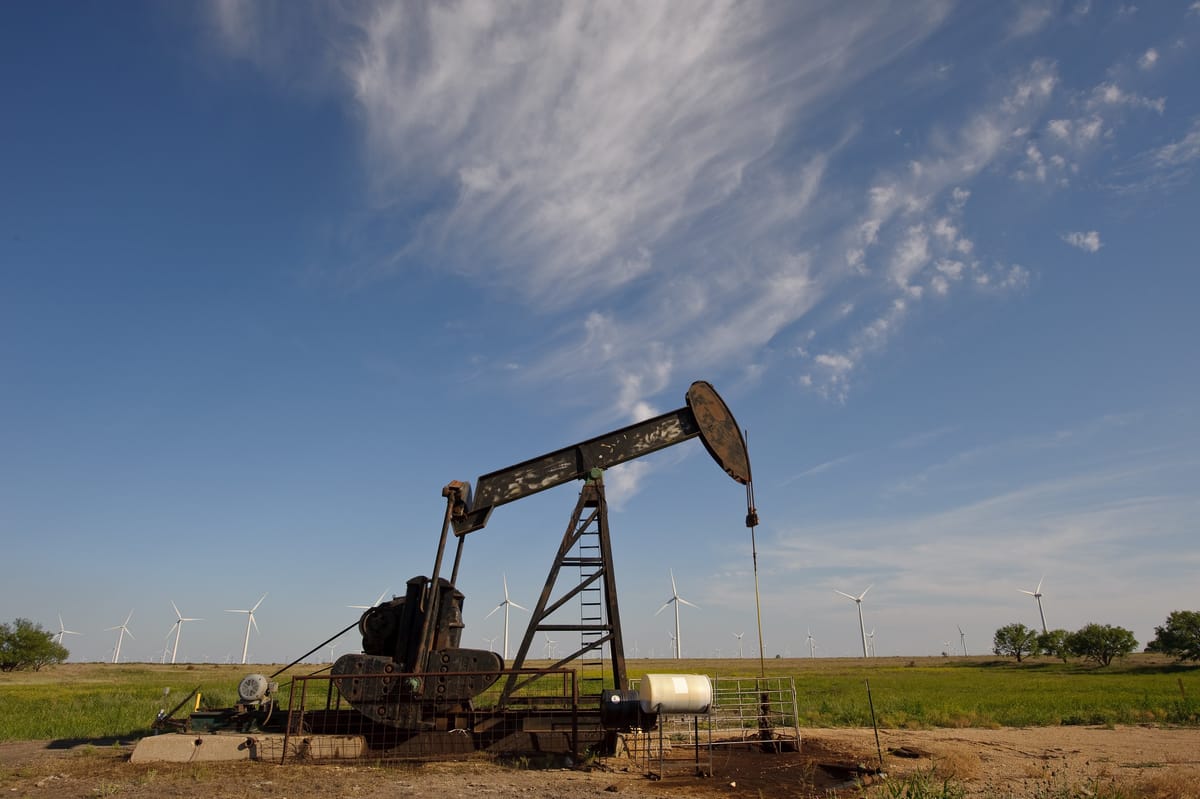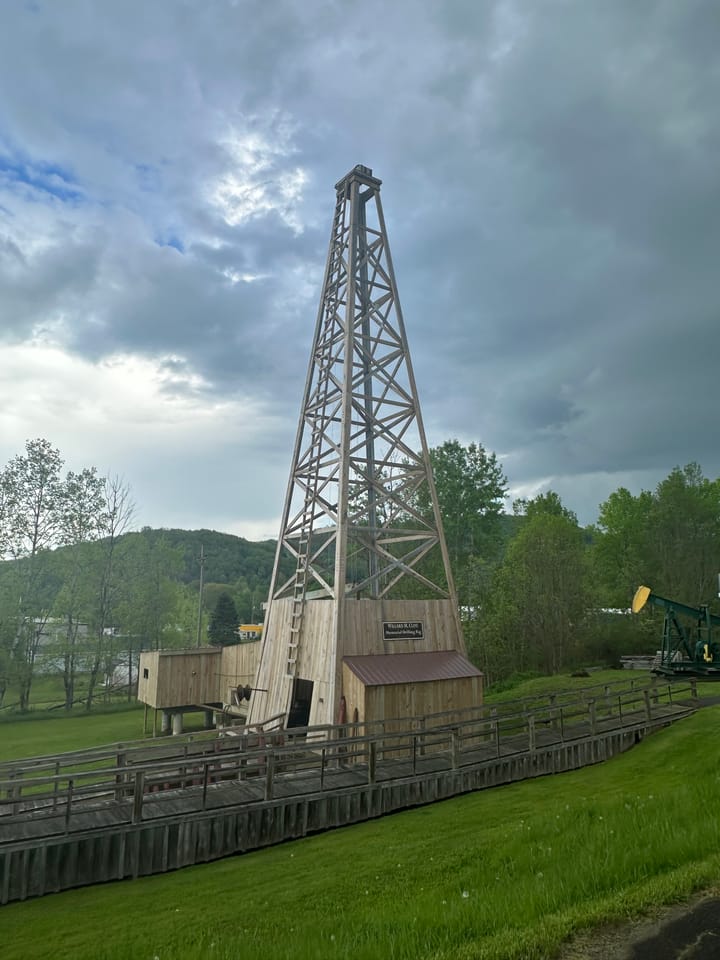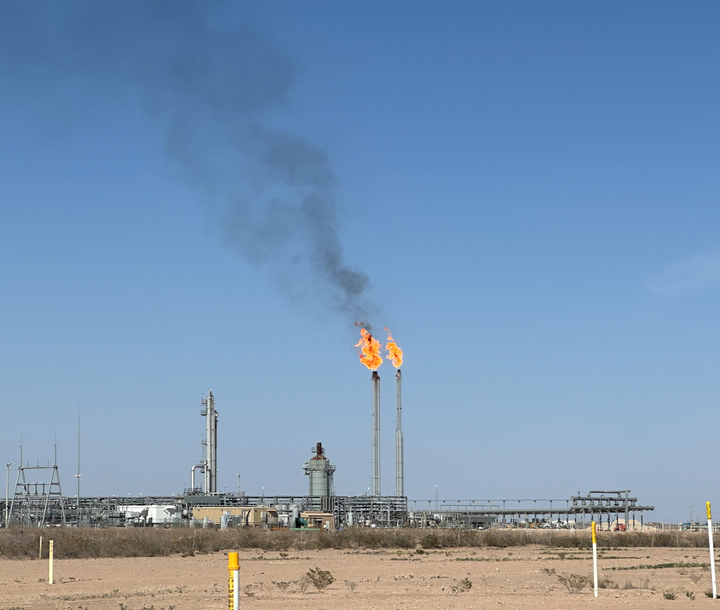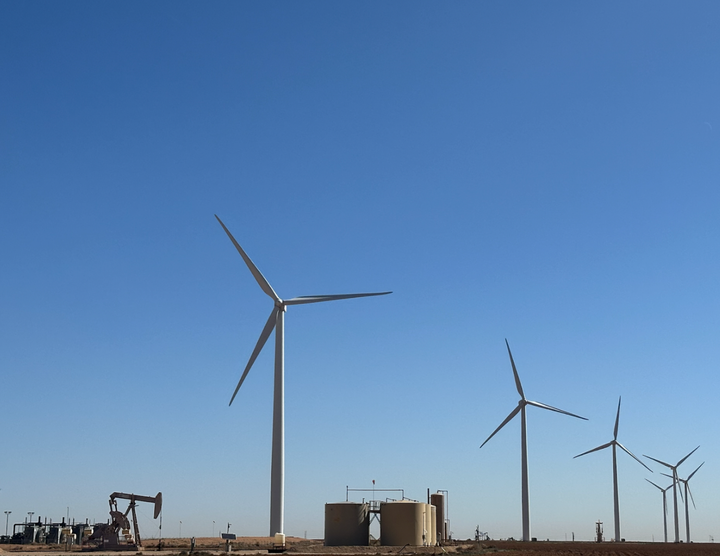After $60 Billion Offer from Exxon, Pioneer CEO Changes His Tune on US Oil Industry

Scott Sheffield is one of the most financially successful shale oil and gas CEOs in America. And while he owes this personal wealth in part to producing a lot of oil, it also has helped that he knows how to “talk his book.” Like Exxon CEO Darren Wood, who is in the process of buying Sheffield’s Pioneer Resources for $60 billion, Sheffield often uses the media to promote very optimistic potential future scenarios for the shale oil industry. History has shown that his optimism doesn’t have a great track record.
As one of the most quoted shale CEOs, Sheffield has a long history of making bold predictions about the oil industry which have often ended up being spectacularly wrong. However, as I’ve written before, being wrong about the future profits and oil output for the U.S. shale industry hasn’t stopped many of these CEOs from personally getting very rich. So far, there have been zero legal consequences for any executives who have done this.
And Sheffield is at it again. As he prepares to exit the shale industry with the $60 billion sale of Pioneer Resources to Exxon, for which he will personally receive over $150 million, he has made another implausibly optimistic prediction that is poised to be one of his worst. However, it is unlikely that anyone at the top of Exxon will raise this as an issue as Exxon is still facing a lawsuit for fraud for doing the same thing about its own Permian oil production.
In December, two months after Exxon offered to buy Pioneer, the New York Times reported that Sheffield’s latest prediction is that the U.S. oil industry could produce 15 million barrels a day within five years, which is roughly two million barrels a day more than current production.
While CEOs are apparently allowed to just make up numbers that sound good to investors, as they say in the oil industry, “the rocks don’t lie.” You can pretend there is more profitable oil in the rocks than there is, but that doesn’t create more oil and eventually the truth is revealed. So where would two million barrels per day of oil come from in the American oil industry?
The U.S. has four main shale plays that produce a lot of oil and increasingly large amounts of associated gas (natural gas that comes out of oil wells). These shale plays are the Bakken, Eagle Ford, Niobrara and the Permian and have driven the significant increase in U.S oil production since 2012. Sheffield’s company is based in the Permian which has freed him up to speak honestly about the other three shale plays in the past.“The heydays of the Bakken, [Texas’s] Eagle Ford, [Nebraska’s] Niobrara, the Scoop Stack* play in Oklahoma, are all over,” Sheffield told the Financial Post in 2021.
*Note: The Scoop Stack is not a major shale play but has been home to some of the most blatant fraud in the shale industry.
I wrote about how the Bakken was peaking in August 2020 and ended my piece with “From here, the outlook only gets worse for the Bakken.” At the time I also noted that a peaking Bakken meant there would not be industry money left over to fund the clean up in North Dakota. This is even more important to consider for the whole U.S. oil industry as the Permian peaks and the total U.S oil and gas industry cleanup bill is estimated to be hundreds of billions of dollars.
It is now clear the Bakken peaked in 2020. Earlier this month oil industry consultant Art Berman wrote about how the declining Eagle Ford is a preview of the Permian’s near future. As Berman notes, back in the day, the real action in shale oil was in the Eagle Ford. Not anymore. The Niobrara is the smallest of the four major shale oil plays and peaked in 2019.
So the only shale play left in the U.S. that has any chance to grow significant production is the Permian. Which is why last year I wrote about how the U.S. shale industry was near peak production. The Permian had another strong year of growth in 2023 but dropping rig counts and declining well production is having an impact and it is likely the Permian will see a decline in production at some point in 2024. This month even the Energy Information Administration noted that, “We forecast production will return to almost 13.3 million b/d in February but then decrease slightly through the middle of 2024.”
So where will two million barrels a day of new oil production come from in the U.S. in the next five years? It would have to come from the Permian (Every other potential U.S. shale play has been explored at this point. There are no new shale gushers waiting in the wings despite past promises of world class assets in the Tuscaloosa Marine Shale and the Scoop Stack.)
Sheffield was correct about the other major shale plays. It is also worth reviewing what he said about the Permian before he was selling his company to Exxon.
“We just don’t have that potential to grow U.S. production ever again,” Sheffield told CNBC’s Brian Sullivan on in March of 2023 at CERAWeek. “We may get back to 13 million barrels a day.” He was correct that production would return to 13 million barrels a day. It did. He also was likely correct about saying that we don’t have potential to grow U.S. production beyond this level. And before his recent return to wildly optimistic predictions of U.S. oil growth, he made a very important point about the Permian. There is limited inventory left. There certainly is potential to produce 15 million barrels for a few years. And then the drop off will be even more extreme as that would just be pulling inventory forward. This is an important concept to understand in the shale industry. It is very easy to cannibalize your own oil production, from existing oil wells and future wells. In 2018, I described how the industry was doing this by drilling wells too close together. Efforts to boost short-term production will inevitably lead to a steeper decline of oil in the future and also reduce the total oil that can potentially be recovered.
In 2022 Sheffield explained to the Wall Street Journal why the industry couldn’t just keep growing fast “You just can’t keep growing 15% to 20% a year,” he said. “You’ll drill up your inventories. Even the good companies.”
Sheffield went further and basically described what took place in 2023 in the Permian explaining that privately held drillers were still increasing production but “[he] warned even the largest of those would drill through their inventory rapidly if they kept it up.” In 2023, they kept it up.
So on one hand Scott Sheffield has made some of the most accurate predictions about the reality of the Permian shale play’s future. And he should know what he is talking about because he has been doing this for decades. So where will the extra two million barrels per day of oil Sheffield recently promised come from in the U.S. in the next five years? Can the Permian grow by two million bpd?
No.
So why would Sheffield say something so obviously improbable? Because he also has a long history of doing just that when it appears to help him personally profit.
Talking his book
Sheffield’s recent return to optimistic oil production forecasts fits his past pattern. Will investors be happy about his bogus predictions of future oil growth? If they believe him, they will, which makes it even more likely that Exxon will be able to acquire Pioneer and Sheffield will ride off into the sunset with staggering wealth. Not bad for a guy who has made some really bad predictions in the past.
In 2019 Sheffield made a prediction about U.S. oil growth over the next five years. He said the U.S. would be producing 17 million barrels per day within five years. Five years later the actual number is a bit over 13 million.
In 2016 he claimed the Permian was profitable when oil was only $30 a barrel. It wasn’t. Not even close. Which is why a few years later he had to make an admission about the finances of the shale industry over the previous decade that Texas Monthly described as “stunning”. “It has been an economic disaster, especially the last ten years,” Sheffield said. “Nobody wants to give us capital because we have all destroyed capital and created economic waste.”
Perhaps Sheffield’s greatest miss was when in 2017 he stated that Pioneer had enough inventory in the Permian to drill for 100 years. At the time he also predicted the Permian would grow to 8-10 million barrels per day (the Permian is currently plateaued at 6 mbpd).
This is a pattern with Sheffield and the latest wildly optimistic prediction is no surprise as it is especially helpful for Exxon right now. Exxon itself has been accused of fraud for its past optimistic predictions about Permian production that have failed to materialize. The Wall Street Journal reported some of these details.
“In March 2019, Mr. Woods said Exxon would increase oil and gas production in the Permian to one million barrels a day as early as 2024, up from previous estimates of 600,000 by 2025”
Now we are in 2024. In Q2 2023, Exxon produced 620,000 mbpd, very near the amount the original data had predicted, but had to agree to spend $60 billion to acquire Pioneer to get over one million barrels per day it had promised. The combined output of the two companies is now 1.3 million bpd.
However, that hasn’t stopped Exxon CEO Darren Woods from once again making a seemingly wild prediction for Permian oil production growth. Woods has predicted that the combined Permian output of Exxon and Pioneer will grow from 1.3 million barrels per day to 2 million barrels per day by 2027.
Sheffield’s recent prediction for 15 million barrels per day makes Exxon’s improbable future growth predictions sound plausible. And history has shown that Sheffield is really good at telling people what they want to hear.
It’s important to note that one of the best ways to vast wealth in the shale oil and gas industry has not been by producing oil or producing oil profitably. It has been by flipping acreage to the greater fool. As I wrote in 2018, the original Shale King, Aubrey McClendon was a flipper:What was McClendon’s secret? Instead of running a company that aimed to sell oil and gas, he was essentially flipping real estate: acquiring leases to drill on land and then reselling them for five to 10 times more, something McClendon explained was a lot more profitable than “trying to produce gas.”
Exxon is well aware of what it's like to be on the wrong side of a flip as its 2009 $40 billion purchase of XTO shale assets is one of the best examples. Exxon was on the wrong end of that flip and ended up writing down most of that $40 billion. Sheffield knows that the big money is in the flip and now will likely go down in history as one of the best flippers with this $60 billion deal. Of course, this appears to make Exxon the greater fool, again. And while it is very likely Exxon overpaid for Pioneer, they also have a trick up their sleeve. Once the profit is extracted from the Permian, and there will be profits, they can walk away and “flip” the cleanup costs to the U.S. public who doesn’t know that they are being set up to be the ultimate greater fool.
Endnote: As reported last week by Bloomberg Law, "A pension fund is suing Pioneer Natural Resources Co. ahead of a planned $60 billion sale to ExxonMobil Corp., citing fears Pioneer’s leaders may have hidden news about Exxon’s finances that threatened the deal’s value to Pioneer shareholders."
This is the second in a series of articles about the current state of the U.S. shale industry and the looming risk of the U.S. public getting stuck with a half trillion bill to clean up the mess left behind by the U.S. oil industry.



Comments ()